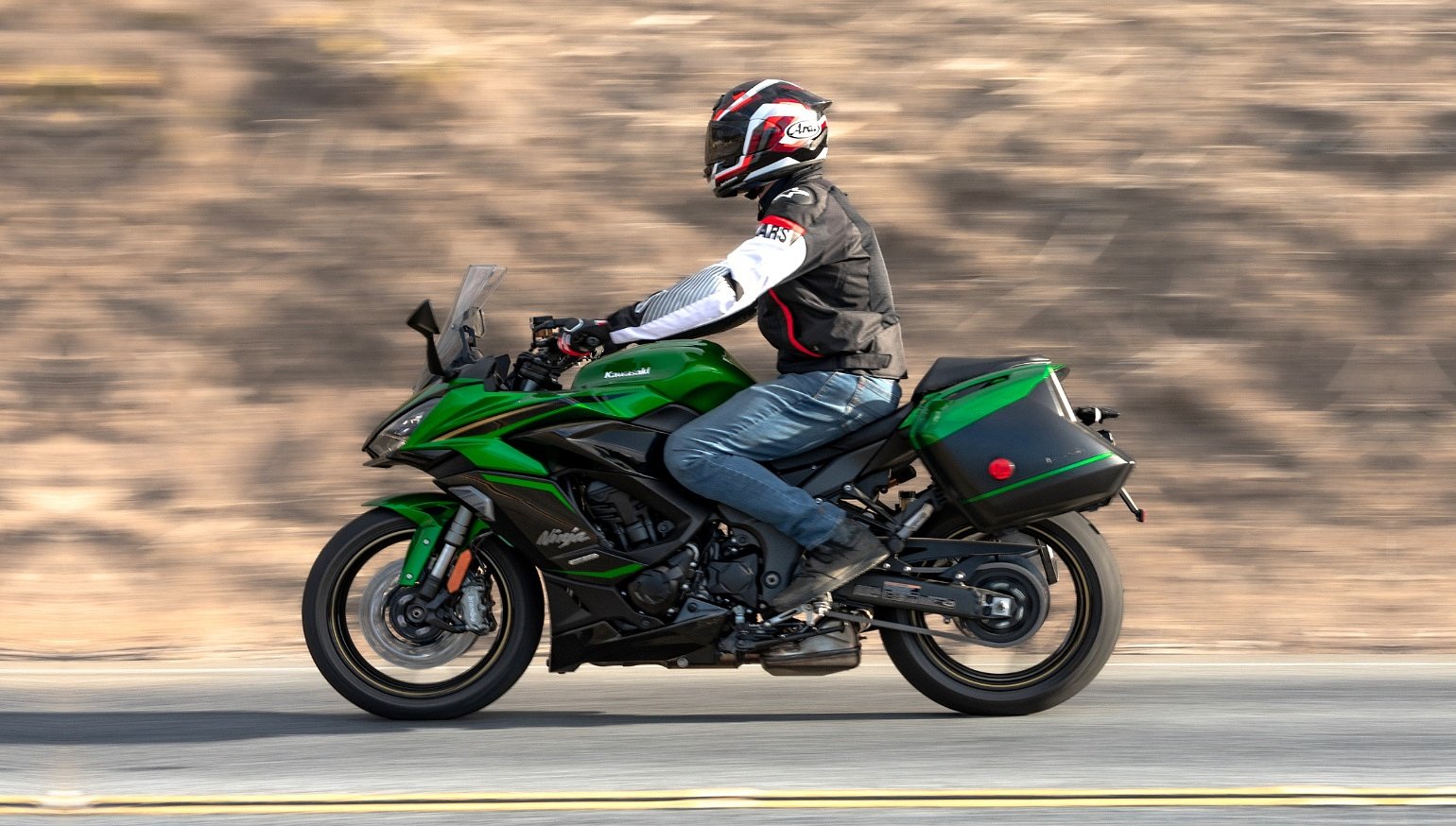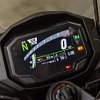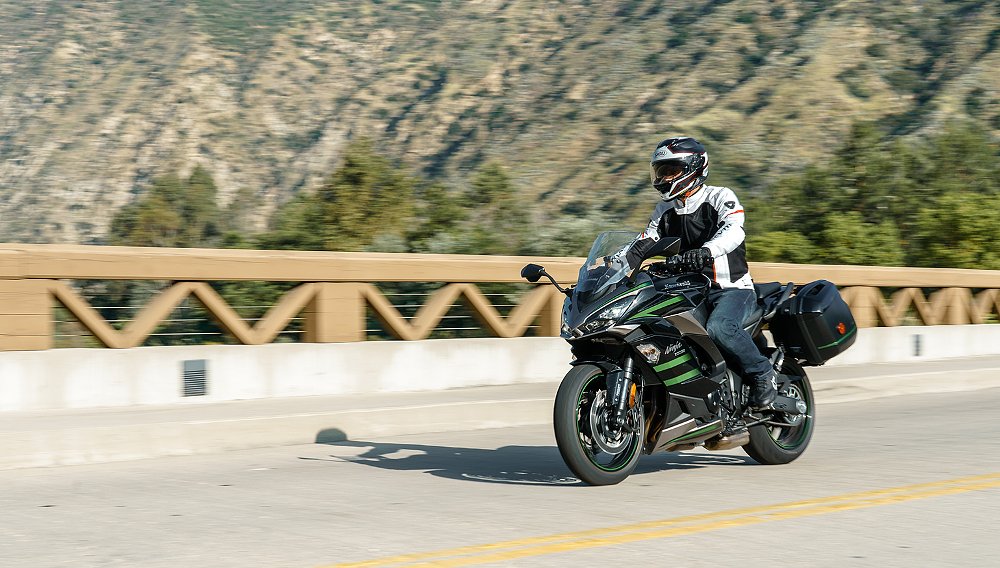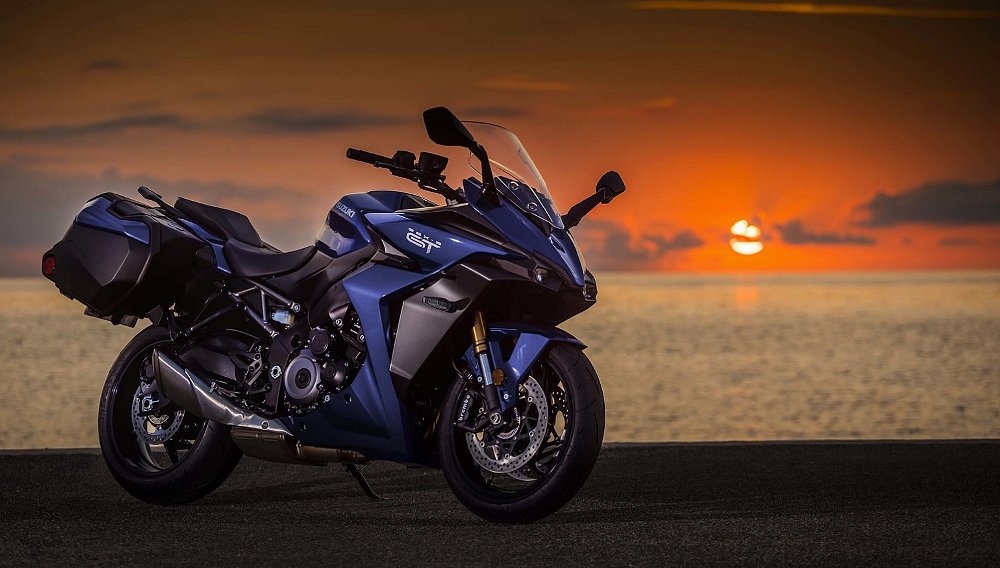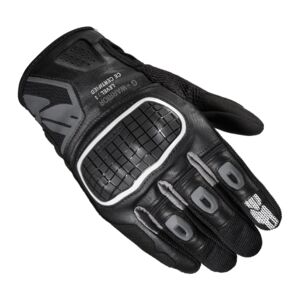Kawasaki says the average Ninja 1000SX owner has 39 years of riding experience. That doesn’t necessarily mean they’re geriatrics, just that they’ve been riding for most of their lives. And all that seat time refines one’s priorities.
For 2025, Kawasaki says it has updated the Ninja sport-tourer to offer more of the performance, comfort, and features that experienced, discerning sport riders want. As a 39-year-old with 34 years behind bars — including an enjoyable stint on the 2020 Ninja 1000SX — I was all ears.
What’s new for 2025
The big news is that it’s now the Ninja 1100SX thanks to a three-millimeter increase in stroke that pushes displacement from 1,043 cc to 1,099 cc. That, along with supporting camshaft, valve spring, throttle body, and intake-port changes, give the bike a boost in low- and midrange power, putting more thrust where riders will use and enjoy it most. The rev limit is 500 rpm lower as a result of the engine changes, but after two weeks on the bike I’ve yet to bump into it.
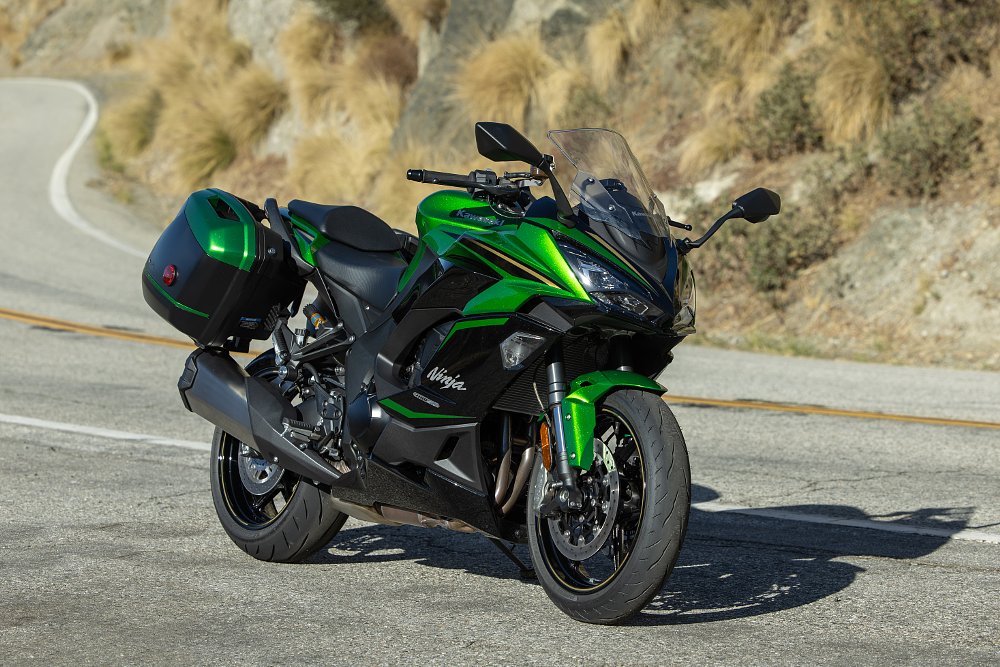
Working hand-in-hand with the added torque is revised gearing, with a taller primary ratio, shorter final-drive ratio, and taller fifth and sixth gears. The net result is even more acceleration in the lower gears with more relaxed cruising in the upper gears. Indeed, the bike sails along smoothly at 70 mph with just 4,200 rpm on the TFT tachometer, approximately 300 rpm lower than on the previous bike. I averaged 38.5 mpg over the course of three tanks, slightly down from the 40 mpg I got on the 2020, but this bike’s use case included a lot more city riding.
Team Green also revised the KQS (quickshifter) mapping so that it works all the way down to 1,500 rpm (the previous system was limited to 2,500 rpm and above), added more weight in the handlebars to damp vibrations, and put a USB-C port in the cockpit for powering accessories.
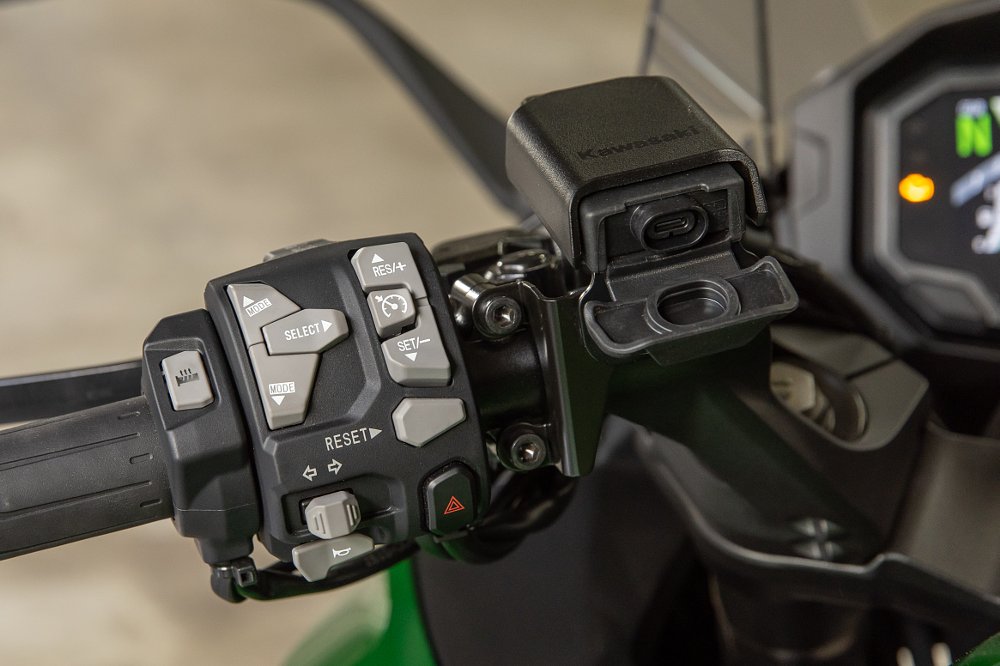
The Ninja 1100SX is available in SE trim for 2025, and that’s the bike I rode. The SE has heated grips, Brembo front brake calipers plumbed with stainless lines, an Ӧhlins shock, and Emerald Blazed Green paint that is, in my experience, spontaneously and unanimously praised. SE status adds $1,700 to the base bike’s $13,699 price tag, which is the same as the outgoing model’s MSRP.
What difference does it make?
Although the engine and SE changes sound significant, the bike was already a rocket with a great chassis, so my opinion is largely the same as before, which is to say excellent. This is a fast, comfortable, sensible bike that’s equally suited to urban errands or inhaling 5,000 miles over the course of a two-week road trip. What really warrants commentary, then, are the changes, or perhaps more accurately the things that were left unchanged.
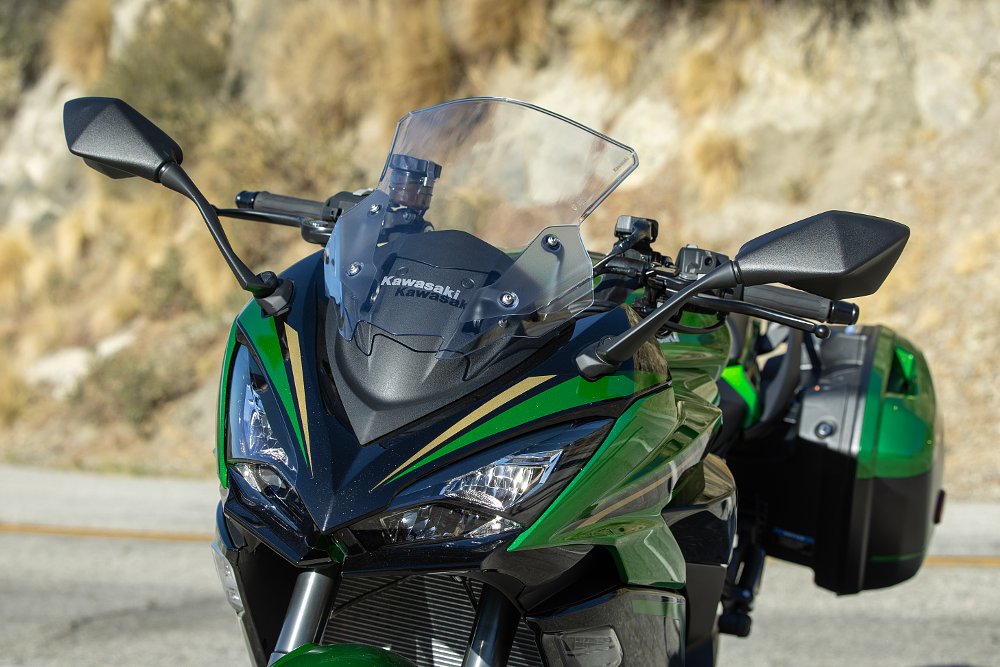
More thrust is fun, and if you turn off traction control you’ll find that the bike floats the front wheel easier than the outgoing bike. The taller gearing is appreciated on the highway, and less vibration is always good, but none of those are areas I would have flagged for attention on the previous, 1,043cc bike. The small windscreen, mirrors that are too small and too far away, and intrusive ABS were things I called out, and they’re still present to sully this otherwise fantastic sport-touring package.
A decent rearview is, in my mind, fundamental. On this and the previous Ninja you can position the mirrors to see behind, you but not beside you, so you're forced to look over your shoulder before changing lanes. Every. Time. If you suffer from a stiff neck, then this bike will either be a problem or the physical therapy you’ve been avoiding. Wouldn't mirrors be easier to address than stroking the crank or broaching new transmission gears?
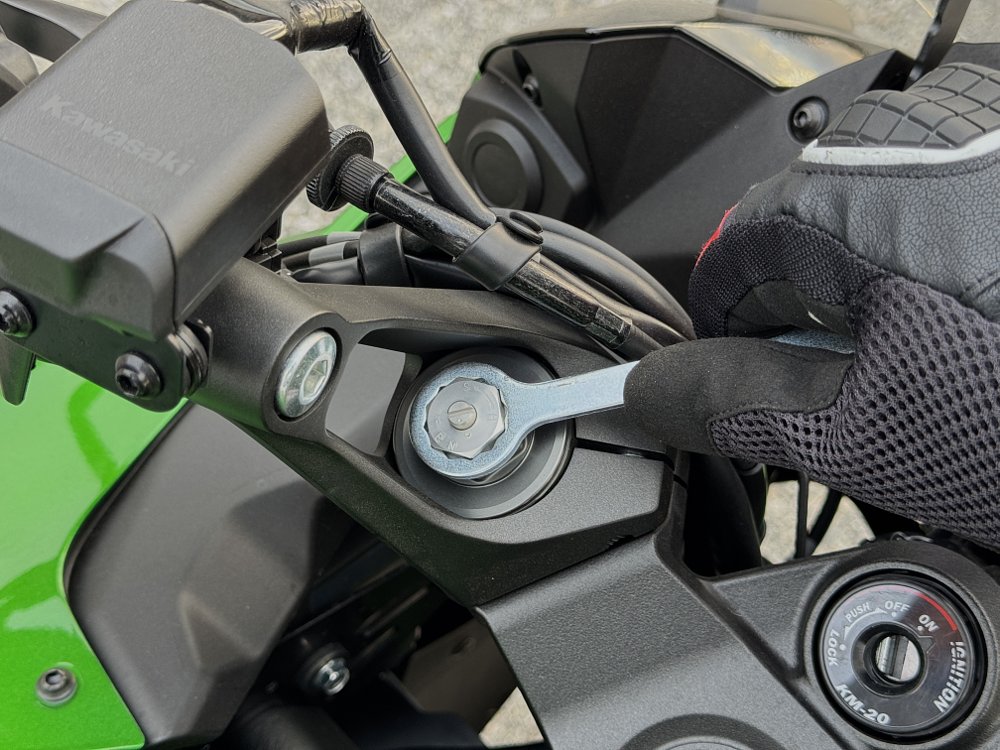
Brembo’s M4.32 calipers should improve the bike’s brakes over the standard Tokicos, but they don’t because the non-adjustable ABS throws its hands up well before you’ve ever applied enough pressure (to the lever or the front contact patch) to feel a difference. The KIBS (Kawasaki Intelligent Anti-Lock Brake System) likely works exactly as its engineers intended, but in the real world, when braking hard for fun or to avoid danger, its over-cautious intervention is confounding.
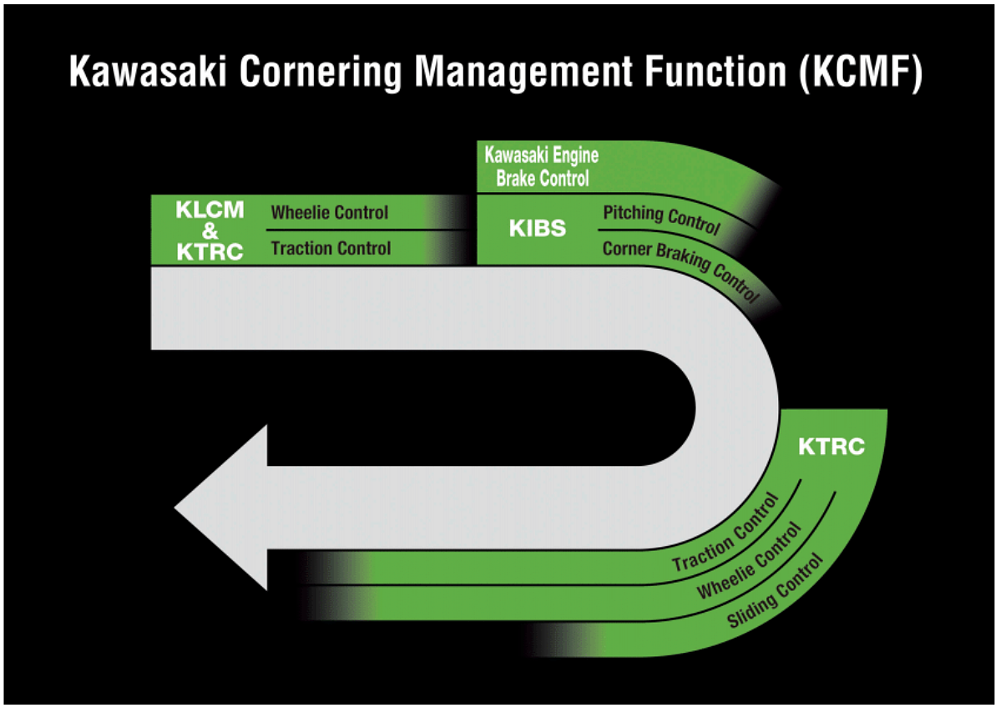
Traction control is conservative as well, even in Sport mode, and cruise control maxes out at 85 mph. There are limitations baked into this bike that encourage force you to take it easy. A Kawasaki rep at the press launch said that this is a bike that’s ideal for the motorcyclist who likes to ride at 75 percent effort. Put another way, this bike will only let you ride to 75%, which is frustrating given the machine's potential. I pulled the ABS fuse and the bike is a totally different beast that decelerates like a proper sport bike and trail brakes deep into corners with impressive composure. This performance is inherent in the bike, but inaccessible due to Kawasaki’s safety philosophy and lack of adjustability.
A higher standard
If it seems like I’m being nit-picky and harsh, it’s because this bike is so close to what I want in my garage, but misses in silly ways that would be so easy for Kawasaki to fix. The 1000SX was close enough to perfect that I’m holding this 1100 to a higher standard. It’s a victim of its own success.

And, because I’m an experienced, discerning rider, I’m pretty hung up on the details. If your racing days are further behind you than mine are or you ride on quiet two-lane roads where you rarely have to use your mirrors, then maybe my complaints don’t matter.
Ultimately, this bike does what Kawasaki designed it to do, and it’s been improved in meaningful ways that enhance what was already an excellent sport-tourer. If your priorities include comfort, performance, value, and versatility, an 1100 might just be the right bike to take you into your fifth decade of riding.
| 2025 Kawasaki Ninja 1000SX SE | |
|---|---|
| Price (MSRP) | $15,399 |
| Engine | 1,099 cc, liquid-cooled, 16-valve, inline four |
|
Transmission, final drive |
Six-speed, chain |
| Claimed horsepower | 134.0 @ 9,000 rpm |
| Claimed torque | 83.2 foot-pounds @ 7,600 rpm |
| Frame | Aluminum twin-spar |
| Front suspension | KYB 41 mm fork, adjustable for spring preload, compression and rebound damping; 4.7 inches of travel |
| Rear suspension | Ohlins shock adjustable for spring preload and rebound damping; 5.4 inches of travel |
| Front brake | Brembo four-piston calipers, 300 mm discs with ABS |
| Rear brake | Nissin single-piston caliper, 250 mm disc with ABS |
| Rake, trail | 24.0 degrees, 3.9 inches |
| Wheelbase | 56.7 inches |
| Seat height | 32.1 inches |
| Fuel capacity | 5.0 gallons |
| Tires | Bridgestone S23, 120/70R17 front, 190/55R17 rear |
| Claimed weight | 516 pounds |
| Available | Now |
| Warranty | 12 months |
| More info | Kawasaki.com |




